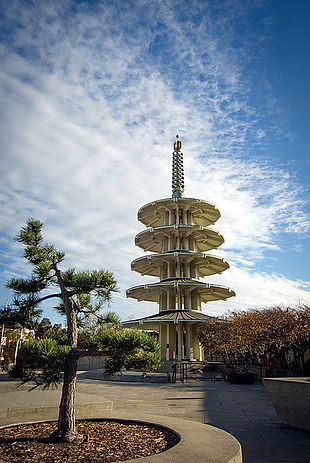
Discover San Francisco's local gem of farm to cone ice cream!
Fillmore
Saadi Halil, acrylic on canvas 2015
The Fillmore District has a long history being home to different minority groups at different points in history. The two who have left the biggest impact however, are The Japanese and African American Communities. The Fillmore painting pays subtle tribute in its style, and overt tribute in its content to these two communities. The inspiration for the style was that of both a Japanese wood block and a Jazz poster.
Fillmore, known for decades as The Harlem of the West, was a bustling center for music, food and nightlife. It was home to numerous nationally acclaimed Jazz clubs and Black owned businesses. Duke Ellington, Billie Holiday, Sarah Vaughan, Chet Baker, Dexter Gordon, Etta James, Leola King, and T-Bone Walker are just a few who performed and frequented the lively area. While much of the neighborhood has been since gentrified, and its legacy Black owned businesses like the Blue Mirror, Bop City, and Jack's Tavern are no longer, The Fillmore Auditorium still stands as does the annual Fillmore Jazz Festival. While diminished in size, The Fillmore remains an important area for organizations and institutions in the Black Community of San Francisco.


2010 Fillmore Jazz Poster

Ella Fitzgerald at The Venetian Room 1967
The 100 foot tall Japanese Peace Pagoda by famed Japanese architect Yoshiro Taniguchi, was donated to the city of San Francisco by its sister city Osaka in 1968. It is a prominent, unique symbol in the heart of Japantown where one can still find a robust Japanese commercial center and street names written in Japanese.

